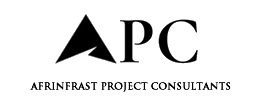
A research team from the University of Auckland has unveiled a breakthrough framework for automated registration of UAV imagery to Building Information Models (BIM) — a long-standing challenge in the digital inspection of complex building façades.
The study introduces a novel two-stage system combining structure-from-motion (SfM) and 3D surface unwrapping, delivering distortion-free panoramic façade images with pixel-level precision. The process is fully automated via a Dynamo prototype developed within Autodesk Revit, dramatically enhancing how UAV data is integrated into inspection workflows and digital twin environments.
“Façade inspection must evolve beyond fragmented images and manual processes,” said lead author Dr. Cheng Zhang. “We’ve built a framework that automates UAV image alignment and texturing for both planar and curved façades—delivering not just accuracy, but clarity and scalability.”
Tackling Façade Distortion and BIM Alignment Head-On
Conventional UAV-based inspection systems struggle with:
- Distorted images due to oblique angles and curved surfaces
- GPS-based errors up to 1 meter in dense urban settings
- Manual alignment that is slow and error-prone
The proposed framework:
- Uses SfM to calculate relative camera poses without relying on RTK GPS
- Automatically unwraps 3D BIM surfaces (planar and singly curved) into 2D
- Generates distortion-free panoramic images that are precisely textured onto BIM models
This significantly boosts accuracy, achieving:
- Mean position error of just 1.7 pixels (~8.5 mm physical level)
- Geometry error under 0.6 pixels
- Rotation deviation < 0.05 degrees
Validated Through Real-World Case Study
The framework was applied to the Auckland War Memorial Museum, a heritage structure with diverse façade geometries. Over 687 UAV images were processed into a single panoramic image and projected onto the BIM model, providing inspectors with:
- Seamless 3D context for damage evaluation
- Instant traceability to original imagery
- Compatibility with VR tools and web-based BIM viewers
“This brings real inspection capability into the digital twin model, not just geometry,” said co-author Dr. Yang Zou.
Implications for the Industry
This work sets a new benchmark in automated building condition documentation, enabling:
- Faster façade condition assessments
- Accurate long-term damage tracking
- Seamless integration into asset management systems and predictive maintenance platforms
The methodology is especially impactful for:
- Historic or complex buildings with curved façades
- Urban sites where GPS is unreliable
- Organisations seeking to scale routine inspections across portfolios
The post New UAV-BIM Framework Delivers Unmatched Accuracy in Façade Inspection and Digital Twin Integration appeared first on Planning, Building & Construction Today.

